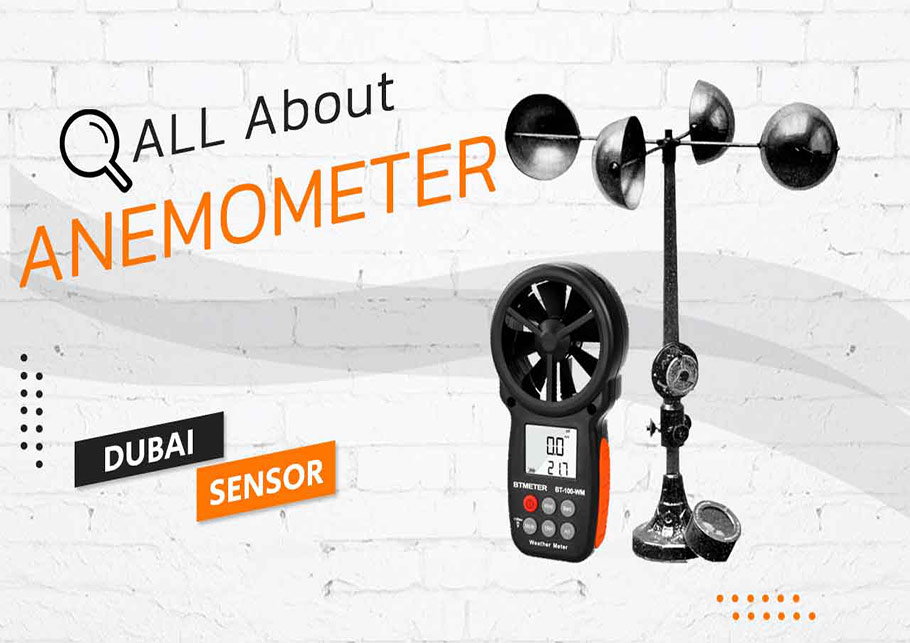Anemometer Innovations: The Current Technology for Wind Speed Dimension
Anemometer Innovations: The Current Technology for Wind Speed Dimension
Blog Article
All You Need to Understand About Anemometers: How They Function, Why They Issue, and Where to Utilize Them
Anemometers, though usually overlooked in the world of scientific tools, play a vital function in numerous fields, providing valuable insights right into wind rate and air movement patterns. Recognizing the auto mechanics behind these tools is crucial for anyone seeking to harness the power of this data. From meteorologists tracking climate patterns to designers creating structures with wind tons in mind, the applications of anemometers are varied and far-ranging. As we dive into the details of anemometer modern technology, we will discover the inner workings of these tools, their significance, and the vital factors to consider when picking the best anemometer for particular applications.

Anemometer Essentials
A necessary tool utilized to measure wind rate and instructions, the anemometer plays an important role in meteorology and various sectors. An anemometer generally consists of 3 or 4 cups that rotate in the wind, a vane that directs right into the wind, and sensing units to track the turnings or movements.
There are different kinds of anemometers readily available, including cup anemometers, vane anemometers, hot-wire anemometers, and sonic anemometers, each with its one-of-a-kind functions and applications. Mug anemometers are frequently utilized for fundamental wind speed measurements, while vane anemometers are liked for directional measurements. Hot-wire anemometers are suitable for low airspeeds, and sonic anemometers are ideal for high-precision dimensions in study and industrial setups. Comprehending the essentials of anemometers is crucial for accurate wind information collection and evaluation across various markets.
Principles of Anemometer Procedure
Structure on the foundational understanding of anemometer essentials, the concepts of anemometer procedure clarify the mechanics behind wind speed and direction dimensions. Anemometers operate on the principle of air movement affecting a sensing unit, creating it to turn. Mug anemometers, for circumstances, have three or more mugs that catch the wind, causing them to rotate quicker as the wind rate boosts. The rotation speed is then transformed into a wind speed measurement. Vane anemometers, on the other hand, make use of a tail or a probe that straightens itself with the wind instructions, giving a measurement of wind instructions based upon the orientation of the sensor. Hot-wire anemometers count on a warmed cable that cools as wind passes over it, with the rate of cooling down figuring out the wind speed. Ultrasonic anemometers step wind speed and direction by analyzing the time it takes for ultrasonic signals to travel between transducers. Recognizing these principles is essential for trusted and precise wind measurements in numerous applications.
Importance of Anemometers
The value of anemometers in weather forecasting and numerous sectors can not be overemphasized. Anemometers play a vital role in determining wind rate and direction, supplying necessary information for weather condition projecting, climate research studies, ecological tracking, and air travel operations. Meteorologists rely upon browse around this web-site anemometers to gather exact wind information, helping them comprehend climate patterns, forecast tornados, and issue timely warnings to the general public. In industries such as building, agriculture, renewable resource, and maritime operations, anemometers are used to maximize processes, ensure safety, and enhance efficiency. For instance, wind ranch drivers use anemometers to examine wind problems and make best use of electrical power manufacturing from wind generators. In the maritime market, anemometers help ship navigation by providing real-time wind information to captains, aiding them make educated choices to ensure safe voyages. In general, anemometers are crucial tools that contribute substantially to safety, efficiency, and informed decision-making in weather forecasting and a large range of industries.
Applications Across Different Industries
In the renewable energy sector, anemometers play a vital duty in examining wind conditions for wind ranch placements, guaranteeing optimum power production. Industries like building and mining utilize anemometers to keep an eye on wind rates, critical for security protocols, particularly when working at heights or in open-pit mines where solid winds can pose hazards. In agriculture, anemometers help farmers in taking care of plant splashing by offering real-time data on wind speed to stay clear of drift.

Selecting the Right Anemometer for Your Needs
Choosing the ideal anemometer customized to your details requirements is essential for getting accurate wind rate and instructions dimensions. When picking an anemometer, take into consideration variables such as the designated application, called for dimension variety, ecological problems, and preferred functions. For basic objectives, a cup anemometer appropriates for measuring wind speed, while a vane anemometer gives wind direction data. Hot-wire anemometers are excellent for reduced airspeed dimensions, and ultrasonic anemometers offer high precision and toughness.

Verdict
Finally, anemometers play an important role in measuring wind rate and direction across numerous sectors. Recognizing the principles of anemometer operation is essential for picking the appropriate gadget for particular demands. From meteorology to aviation, anemometers are essential tools for accumulating exact information and making certain safety in different applications. When choosing the most appropriate tool for gauging wind conditions., it is vital to think about the value of anemometers in order to make enlightened decisions.
There are various types of anemometers available, consisting of mug anemometers, vane anemometers, hot-wire anemometers, and sonic anemometers, each with its distinct attributes and applications. Mug anemometers are commonly made use of for standard wind speed dimensions, while vane anemometers are preferred for directional measurements. Hot-wire anemometers are ideal for low airspeeds, and sonic anemometers are ideal for high-precision measurements in research and industrial setups.Structure on the foundational understanding of anemometer essentials, the concepts of anemometer procedure illuminate the technicians behind wind rate and instructions measurements. For general objectives, a mug anemometer is ideal for determining wind rate, while a vane anemometer gives wind direction data.
Report this page